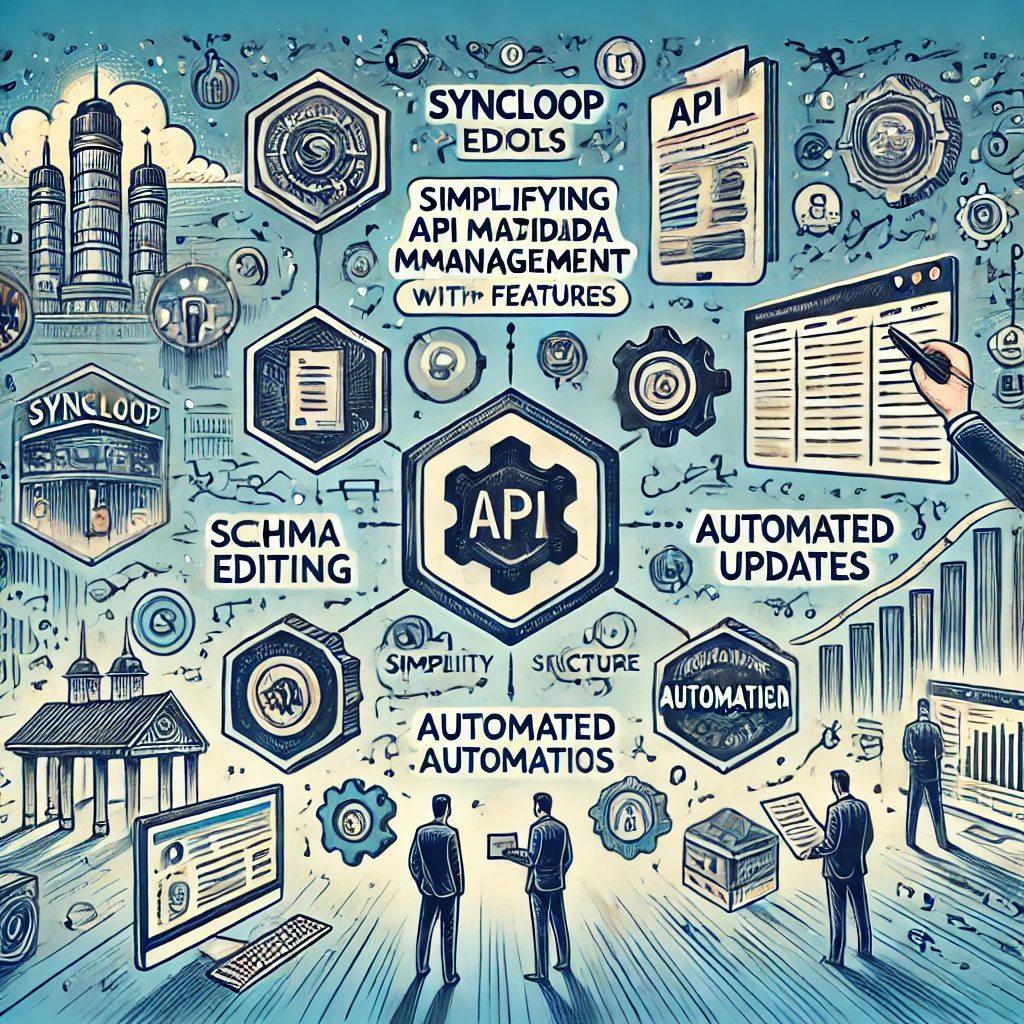Simplifying API Metadata Management with Syncloop Features

Syncloop offers a suite of tools that simplify metadata management, empowering developers to create, organize, and utilize metadata effectively. This blog explores how Syncloop optimizes metadata management and provides best practices for leveraging its features.
Why Metadata Management Matters for APIs
- Enhanced Documentation: Provides clear and accurate details for developers integrating with APIs.
- Improved Discoverability: Makes it easier to find and understand API capabilities.
- Streamlined Integration: Facilitates faster and more efficient API usage by clients and partners.
- Consistency and Compliance: Ensures that APIs adhere to organizational standards and regulatory requirements.
- Optimized Maintenance: Simplifies versioning, updates, and deprecations with well-organized metadata.
How Syncloop Simplifies API Metadata Management
1. Dynamic Metadata Generation
- Automatically generate metadata from API definitions, reducing manual effort and ensuring consistency.
2. Centralized Metadata Repository
- Store and manage metadata in a centralized platform for easy access and updates.
3. Versioning Support
- Track and manage metadata for multiple API versions, ensuring backward compatibility and seamless transitions.
4. Customizable Metadata Fields
- Add custom fields to describe unique API behaviors, parameters, or configurations.
5. Real-Time Updates
- Synchronize metadata updates instantly across environments to maintain accuracy.
6. Integration with Documentation Tools
- Use Syncloop’s integration capabilities to connect metadata with API documentation platforms.
7. Monitoring and Analytics
- Track metadata usage and identify gaps or inconsistencies with Syncloop’s analytics tools.
Benefits of Using Syncloop for Metadata Management
1. Faster Development Cycles
Reduce the time spent on manual metadata updates with automated tools and centralized management.
2. Improved Collaboration
Enable cross-functional teams to access and contribute to metadata effortlessly.
3. Enhanced API Quality
Ensure metadata accuracy and completeness for seamless client integrations.
4. Scalable Management
Handle growing API portfolios efficiently with Syncloop’s versioning and real-time synchronization.
5. Compliance Assurance
Maintain consistency with organizational standards and regulatory requirements.
Real-World Applications of Metadata Management with Syncloop
1. SaaS Platforms
- Document multi-tenant APIs with metadata that describes tenant-specific configurations and usage limits.
2. E-Commerce
- Provide clear metadata for APIs handling product catalogs, order processing, and payment gateways.
3. IoT Ecosystems
- Manage metadata for device-to-cloud communication APIs, ensuring consistent data formats and protocols.
4. Healthcare Applications
- Maintain detailed metadata for APIs managing patient records, ensuring compliance with healthcare standards like HIPAA.
5. Financial Services
- Streamline metadata for APIs dealing with transactions, reporting, and regulatory compliance.
Steps to Simplify Metadata Management with Syncloop
Step 1: Generate Metadata Automatically
- Use Syncloop’s dynamic tools to create metadata directly from API definitions.
Step 2: Organize Metadata Centrally
- Store metadata in a centralized repository to simplify access and updates.
Step 3: Customize Metadata Fields
- Add specific fields to capture unique API parameters, behaviors, or dependencies.
Step 4: Synchronize Updates
- Ensure real-time metadata updates across all environments using Syncloop’s synchronization tools.
Step 5: Integrate with Documentation
- Connect metadata with API documentation platforms to enhance clarity and discoverability.
Step 6: Monitor Usage
- Use Syncloop’s analytics to track metadata utilization and identify areas for improvement.
Best Practices for API Metadata Management
- Standardize Metadata Formats: Use consistent schemas and naming conventions for all APIs.
- Automate Wherever Possible: Leverage automation to reduce manual errors and save time.
- Update Regularly: Ensure metadata stays current with API changes and updates.
- Use Descriptive Fields: Provide detailed descriptions to clarify API capabilities and requirements.
- Enable Collaboration: Allow team members to access and contribute to metadata for a unified approach.
- Monitor and Optimize: Track metadata usage to identify gaps and refine management processes.
Conclusion
Efficient metadata management is crucial for API success, enabling clear documentation, seamless integrations, and scalable operations. Syncloop simplifies metadata management with tools for dynamic generation, real-time updates, and centralized storage, empowering developers to optimize their workflows.
Whether you’re managing APIs for SaaS platforms, IoT ecosystems, or financial services, Syncloop provides the capabilities to streamline metadata and enhance API quality. Embrace Syncloop to transform your metadata management strategy and achieve greater efficiency.
A conceptual visualization of API metadata management powered by Syncloop, showcasing centralized repositories, real-time updates, and integration with documentation platforms.
Back to Blogs